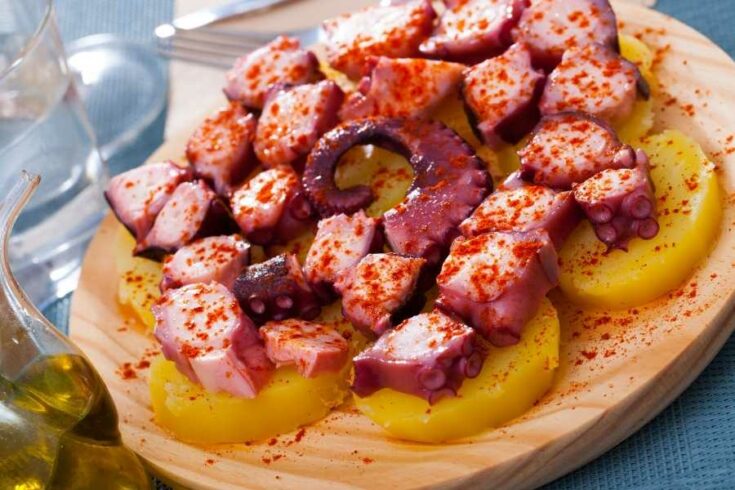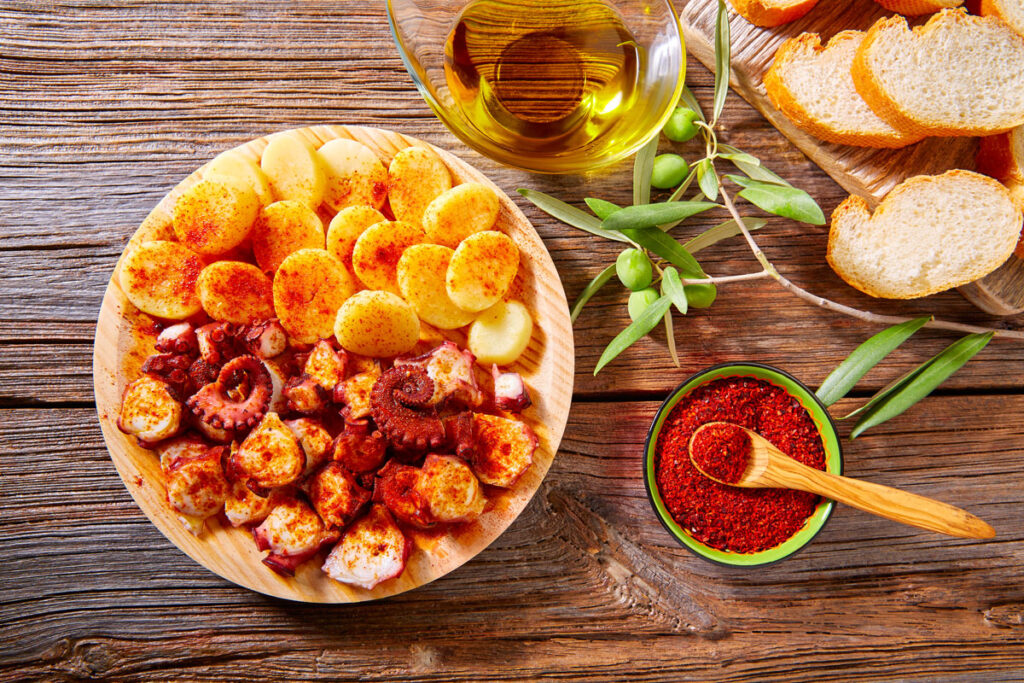Transport yourself to the bustling tapas bars of Galicia with this simple and authentic recipe for Pulpo A La Gallega, also known as Galician-Style Octopus. This iconic Spanish dish features tender octopus, boiled to perfection and drizzled with olive oil, sprinkled with smoked paprika, and seasoned with salt. It’s surprisingly easy to make at home and is the perfect appetizer to impress your guests or enjoy as a light meal. This recipe will guide you through each step, from preparing the octopus to achieving that melt-in-your-mouth texture that makes Pulpo A La Gallega so irresistible. Get ready to savor a true taste of Spain!
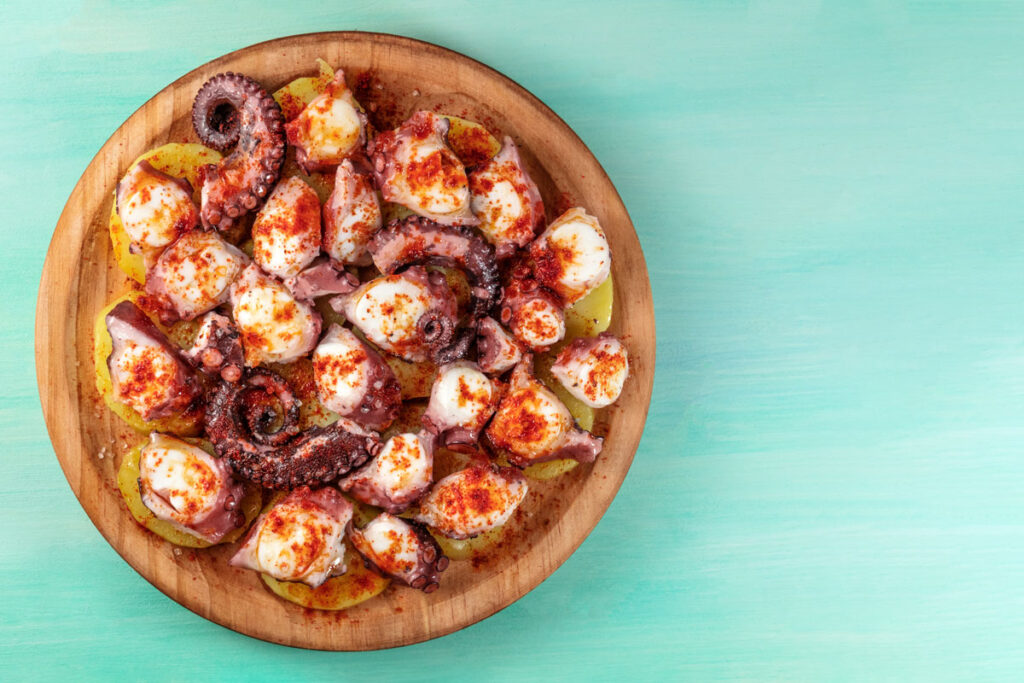
Recipe Overview
Before we dive into the step-by-step instructions, here’s a quick overview of what to expect:

| Category | Value |
|---|---|
| Preparation Time | 15 minutes |
| Cooking Time | 45-60 minutes |
| Servings | 4-6 servings |
| Difficulty | Easy |
Nutrition Information (Per Serving – approximate)
Here is the approximate nutritional information per serving of Pulpo A La Gallega. Please note that these values can vary based on the exact ingredients and portion sizes used.
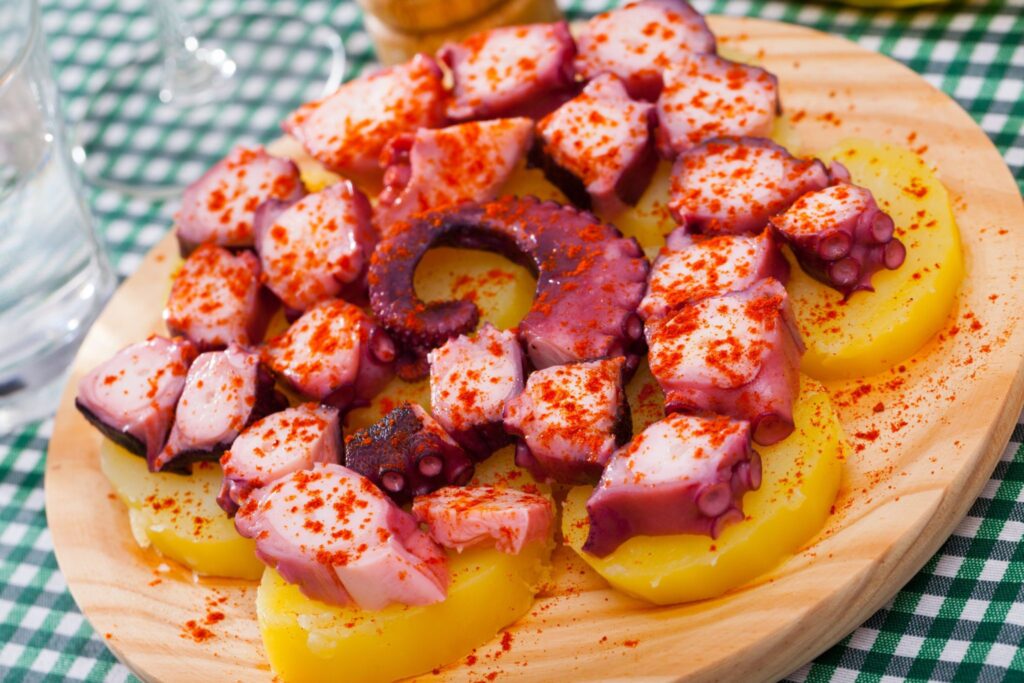
| Nutrient | Amount |
|---|---|
| Calories | Approximately 200-250 kcal |
| Protein | Approximately 25-30g |
| Fat | Approximately 8-12g (mostly from olive oil) |
| Carbohydrates | Approximately 5-10g |
Ingredients You’ll Need
Gather these simple ingredients to create your authentic Pulpo A La Gallega:
| Ingredient | Quantity |
|---|---|
| Octopus (fresh or frozen, about 3-4 lbs) | 1 whole octopus |
| Large Potatoes | 2-3, peeled and quartered |
| Extra Virgin Olive Oil | To taste, for drizzling |
| Smoked Paprika (Pimentón de la Vera) | To taste, preferably sweet or bittersweet |
| Coarse Sea Salt | To taste |
| Water | Enough to cover the octopus |
Cooking Instructions
Follow these step-by-step instructions to create perfectly cooked Pulpo A La Gallega:
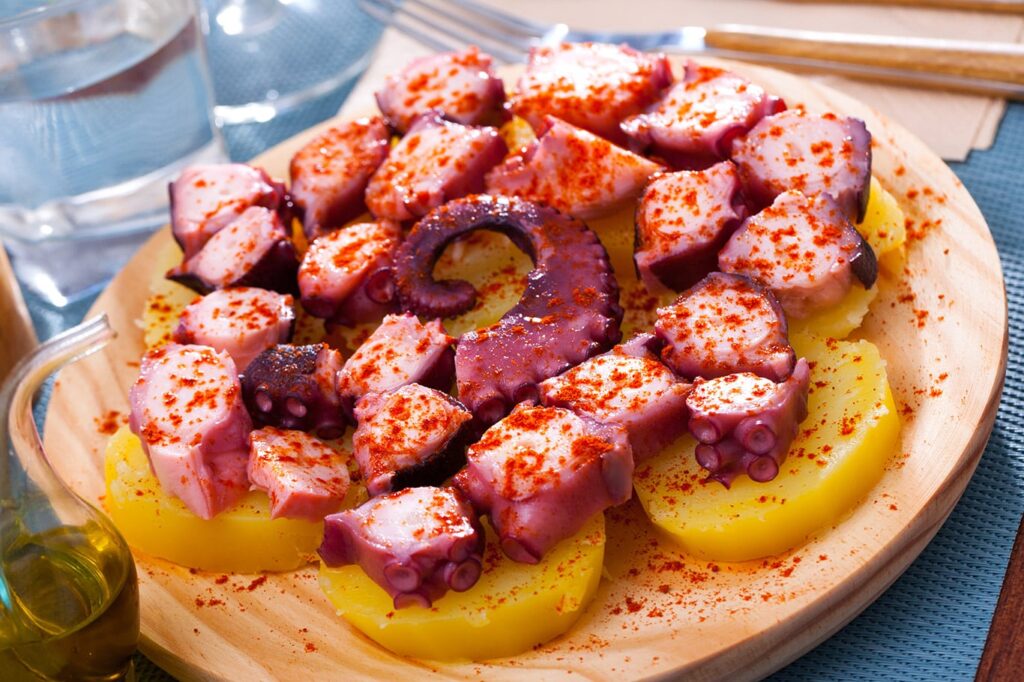
- Prepare the Octopus: If using frozen octopus, thaw it completely in the refrigerator overnight. Rinse the octopus thoroughly under cold running water. Some people prefer to remove the beak and the eyes. This is optional, but it makes the final dish more appealing. Pat the octopus dry with paper towels.
- Tenderize the Octopus (Important Step): This is the secret to a tender octopus! There are a few methods you can use. The classic method involves holding the octopus by the head and dipping it three times into a pot of boiling water. Each dip should last a few seconds. This process helps to curl the tentacles and tenderize the meat. Alternatively, you can massage the octopus with coarse salt for a few minutes. This helps to break down the tough fibers.
- Boil the Octopus: Fill a large pot with water and bring it to a rolling boil. Do not add salt to the water. Gently lower the octopus into the boiling water. Reduce the heat to a simmer and cook for approximately 45-60 minutes, or until the octopus is tender. The cooking time will depend on the size of the octopus. You can test for doneness by inserting a fork into the thickest part of the tentacle. It should be easily pierced with little resistance.
- Cook the Potatoes (Optional): While the octopus is cooking, you can cook the potatoes in a separate pot. Place the peeled and quartered potatoes in a pot, cover with cold water, and bring to a boil. Cook until the potatoes are tender, about 15-20 minutes. Alternatively, you can add the potatoes to the same pot as the octopus during the last 20 minutes of cooking. This will infuse them with the octopus flavor.
- Rest the Octopus: Once the octopus is cooked, remove it from the pot and let it rest for about 5-10 minutes. This allows the muscle fibers to relax, resulting in a more tender texture.
- Cut the Octopus: Using a sharp knife or kitchen scissors, cut the octopus into bite-sized pieces, about 1/4 inch thick.
- Assemble the Pulpo A La Gallega: Arrange the cooked potatoes on a wooden plate or platter. Top with the sliced octopus.
- Dress and Serve: Generously drizzle the octopus and potatoes with extra virgin olive oil. Sprinkle liberally with smoked paprika and coarse sea salt. Serve immediately.
Serving Suggestions
Pulpo A La Gallega is traditionally served hot or warm, immediately after preparation. Here are some serving suggestions to enhance your experience:
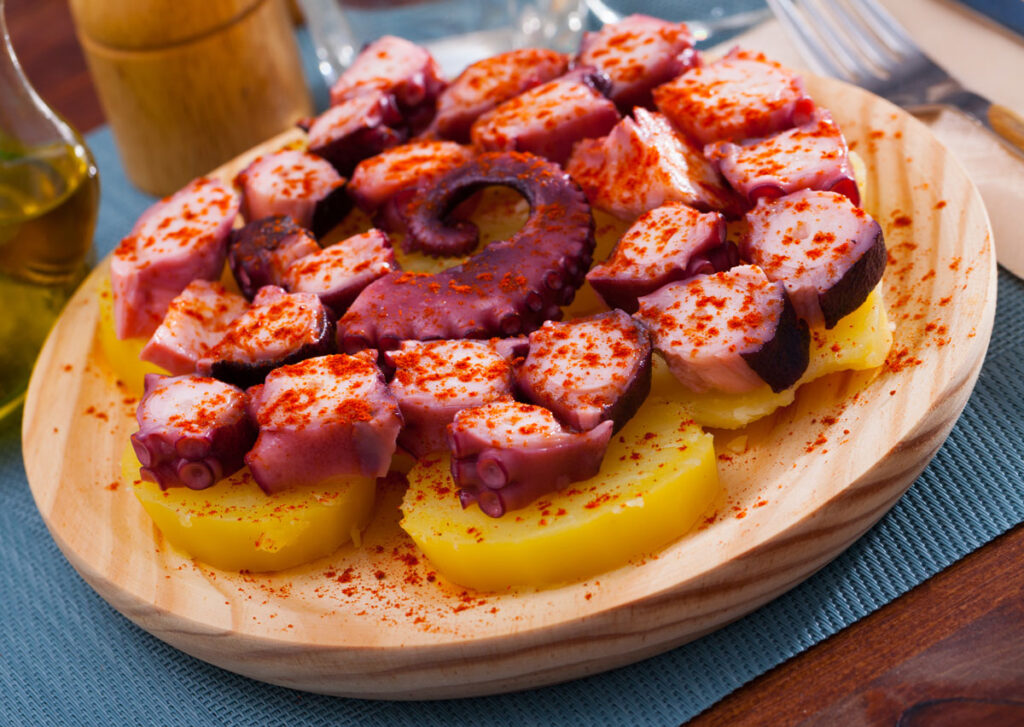
- Serve on a wooden plate: This adds an authentic touch and helps absorb excess oil.
- Pair with crusty bread: Perfect for soaking up the flavorful olive oil and paprika.
- Serve with a glass of Albariño wine: This crisp, dry white wine from the Galicia region is the perfect complement to Pulpo A La Gallega.
- Add a squeeze of lemon juice: For a touch of brightness and acidity.
Tips and Notes for Perfect Pulpo A La Gallega
- Choosing the Right Octopus: Fresh or frozen octopus can be used. Frozen octopus is often pre-tenderized, which can save you some time. If using fresh octopus, make sure it smells fresh and doesn’t have a strong fishy odor.
- Tenderizing Techniques: While dipping the octopus in boiling water is the traditional method, you can also freeze the octopus overnight before cooking. Freezing helps break down the muscle fibers and results in a more tender texture. Another method is to beat the octopus against a hard surface a few times, but this can be a bit messy.
- Cooking Time is Key: Overcooked octopus will be tough and rubbery. The key is to cook it until it is just tender. Start checking for doneness after about 45 minutes.
- Don’t Add Salt to the Cooking Water: Adding salt to the cooking water can make the octopus tougher.
- Use High-Quality Olive Oil: The olive oil is a crucial element of the dish, so use the best quality extra virgin olive oil you can find.
- Smoked Paprika Matters: Use authentic Pimentón de la Vera, a Spanish smoked paprika, for the best flavor. You can find it in sweet, bittersweet, and hot varieties. Choose the one you prefer, or experiment with a combination.
- Potatoes are Optional but Recommended: While the octopus is the star of the show, the potatoes provide a nice starchy contrast to the tender octopus.
Pulpo A La Gallega is a simple yet elegant dish that is sure to impress. With a few simple ingredients and these easy-to-follow instructions, you can recreate this classic Spanish tapa in your own kitchen. Enjoy the authentic flavors of Galicia!
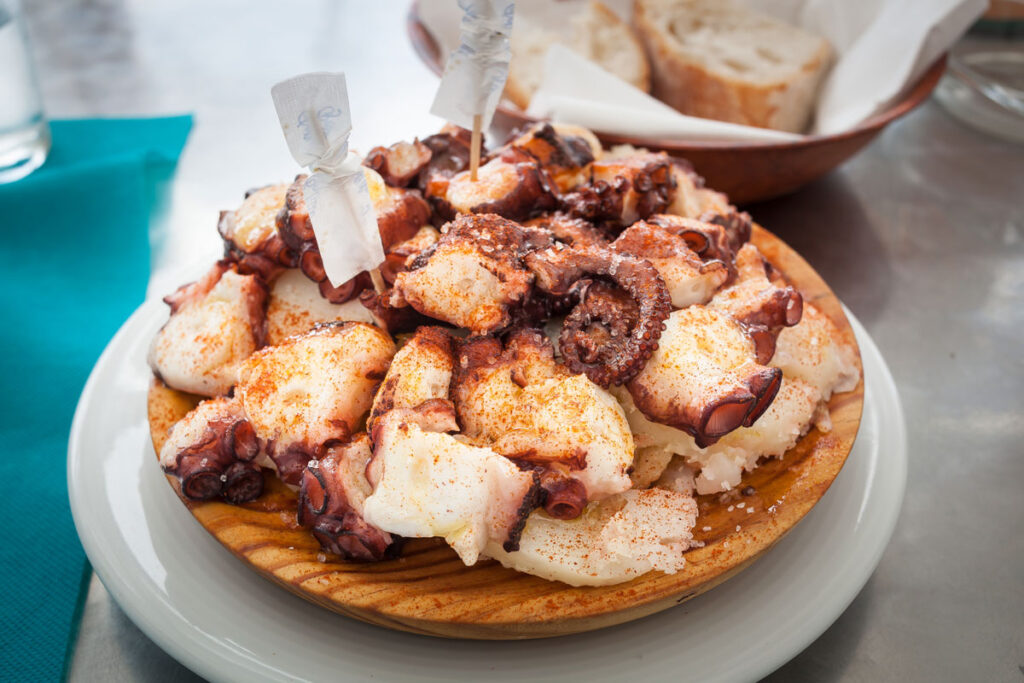
Remember the key is tenderizing, proper cooking time, and quality ingredients to create the perfect Pulpo A La Gallega. This Spanish Octopus dish, when done right, is a culinary delight. Enjoy this Spanish Pulpo A La Gallega and share it with friends and family.
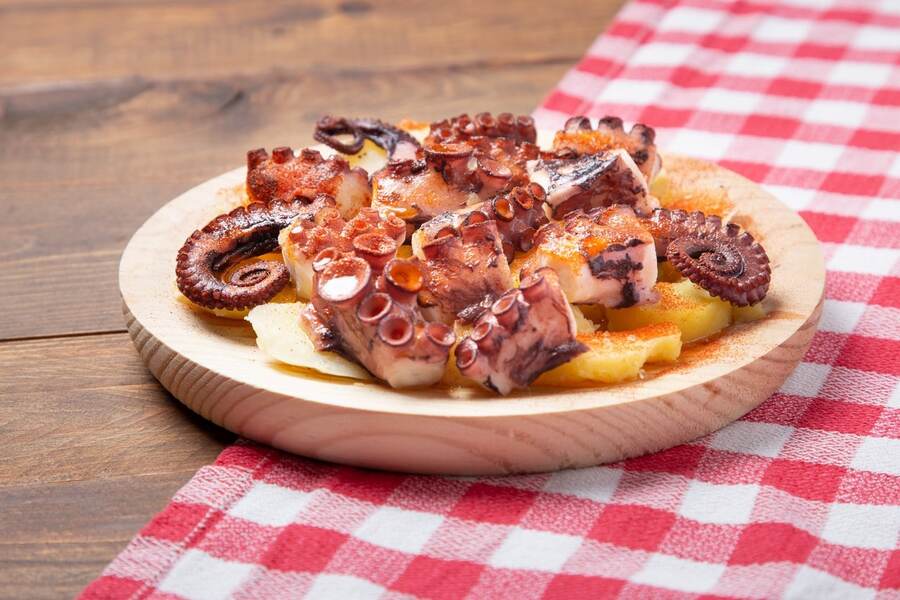
Experiment with different types of smoked paprika to find your favorite flavor profile. Sweet paprika will give the dish a subtle sweetness, while bittersweet will add a more complex, smoky flavor. Hot paprika will add a kick of heat.
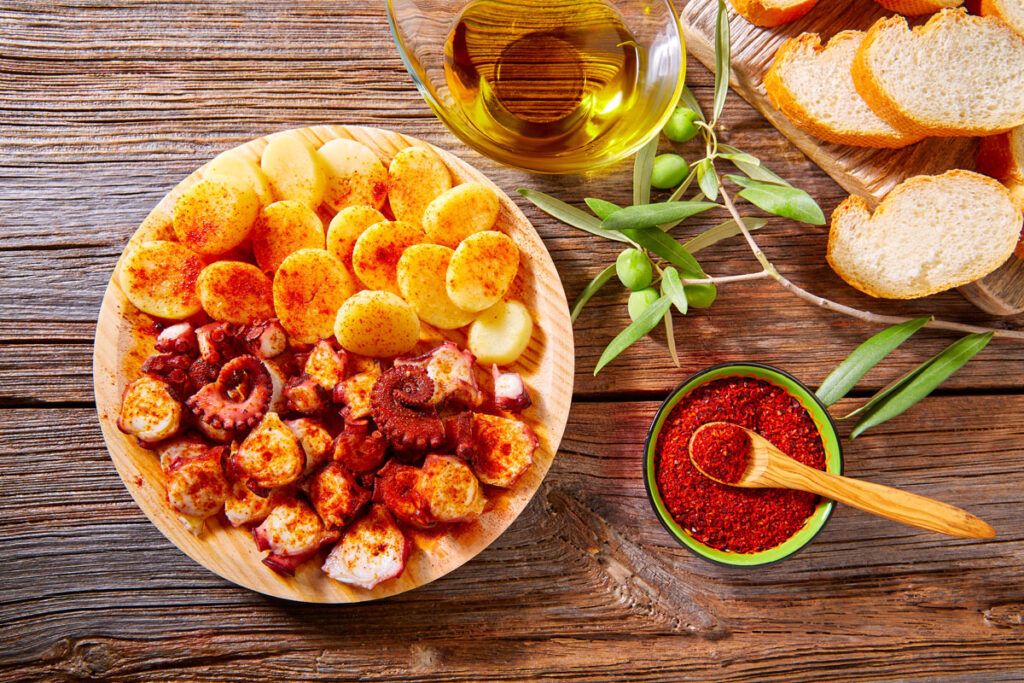
The presentation of Pulpo A La Gallega is also important. Serving it on a rustic wooden plate adds to the authentic experience. Don’t be afraid to be generous with the olive oil and smoked paprika – these are the key flavors of the dish. This Pulpo A La Gallega is a delightful Spanish treat.
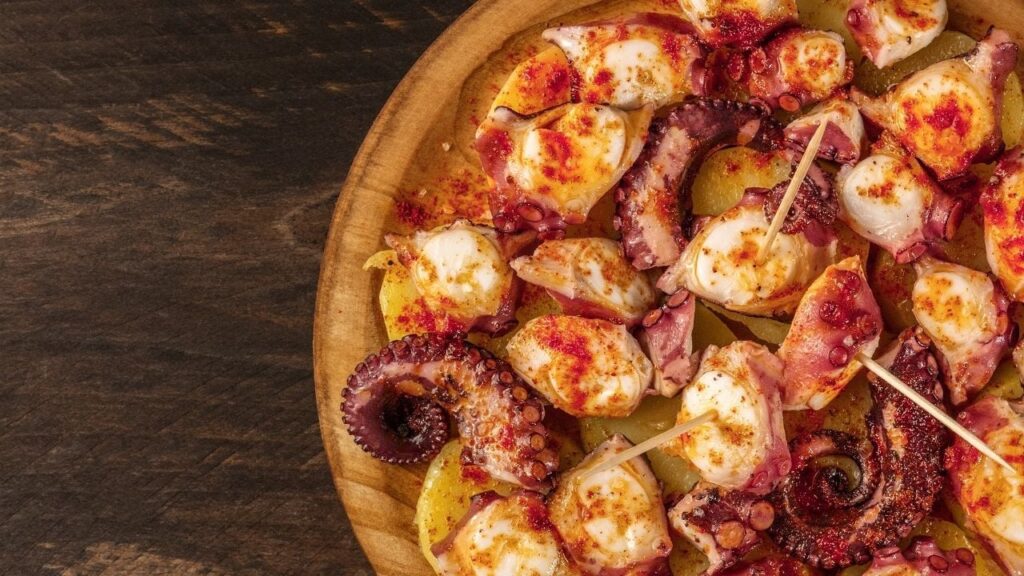
Pulpo A La Gallega is more than just a dish; it’s an experience. It’s a taste of Spain, a celebration of simple ingredients, and a reminder that the best things in life are often the simplest. Enjoy your homemade Pulpo A La Gallega!
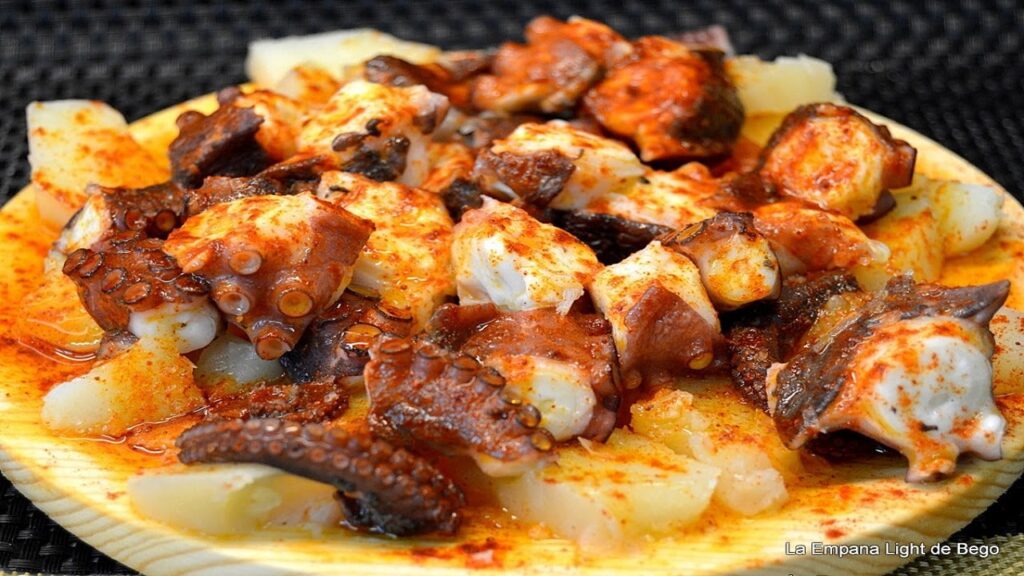
If you are looking to explore more Spanish recipes, consider trying patatas bravas or gambas al ajillo, both are staples of Spanish cuisine. The secret to a good Pulpo A La Gallega is patience and quality ingredients.
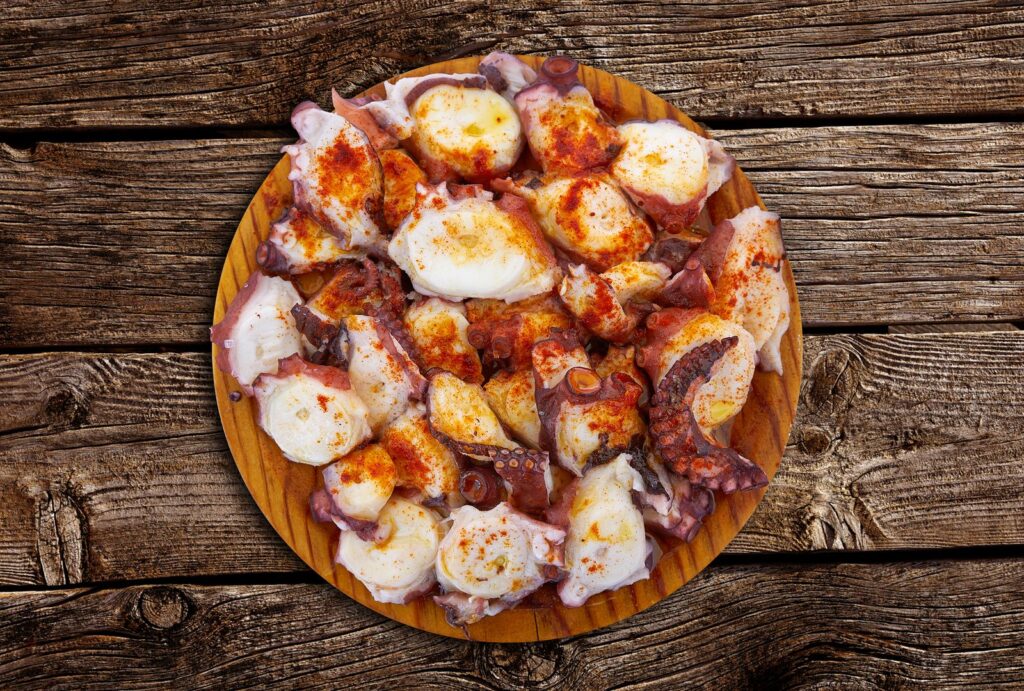
The smoky flavor of the paprika combined with the tender octopus and rich olive oil make Pulpo A La Gallega a truly unforgettable dish. Now you are ready to master the art of making Pulpo A La Gallega.

Don’t be intimidated by the process of cooking octopus. With a little practice and these tips, you will be making perfect Pulpo A La Gallega in no time. Pulpo A La Gallega – a perfect appetizer or a light meal, any time of the year.
So gather your ingredients, follow these instructions, and get ready to enjoy the authentic taste of Galicia with this amazing Pulpo A La Gallega recipe! This Pulpo A La Gallega is waiting to be made and devoured.
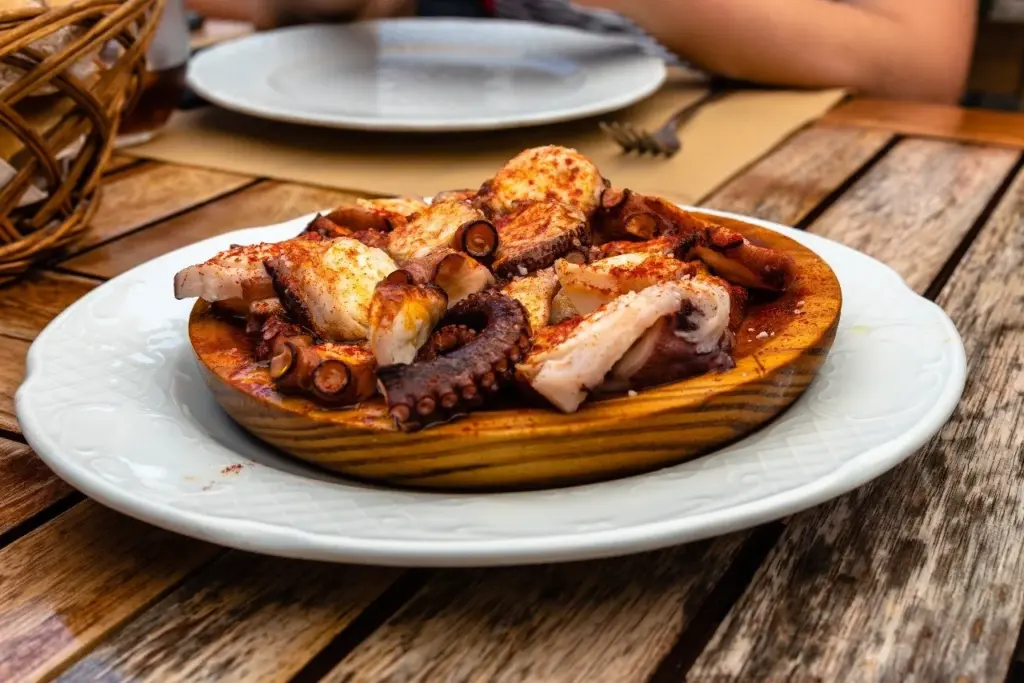
Enjoy this Pulpo A La Gallega!
